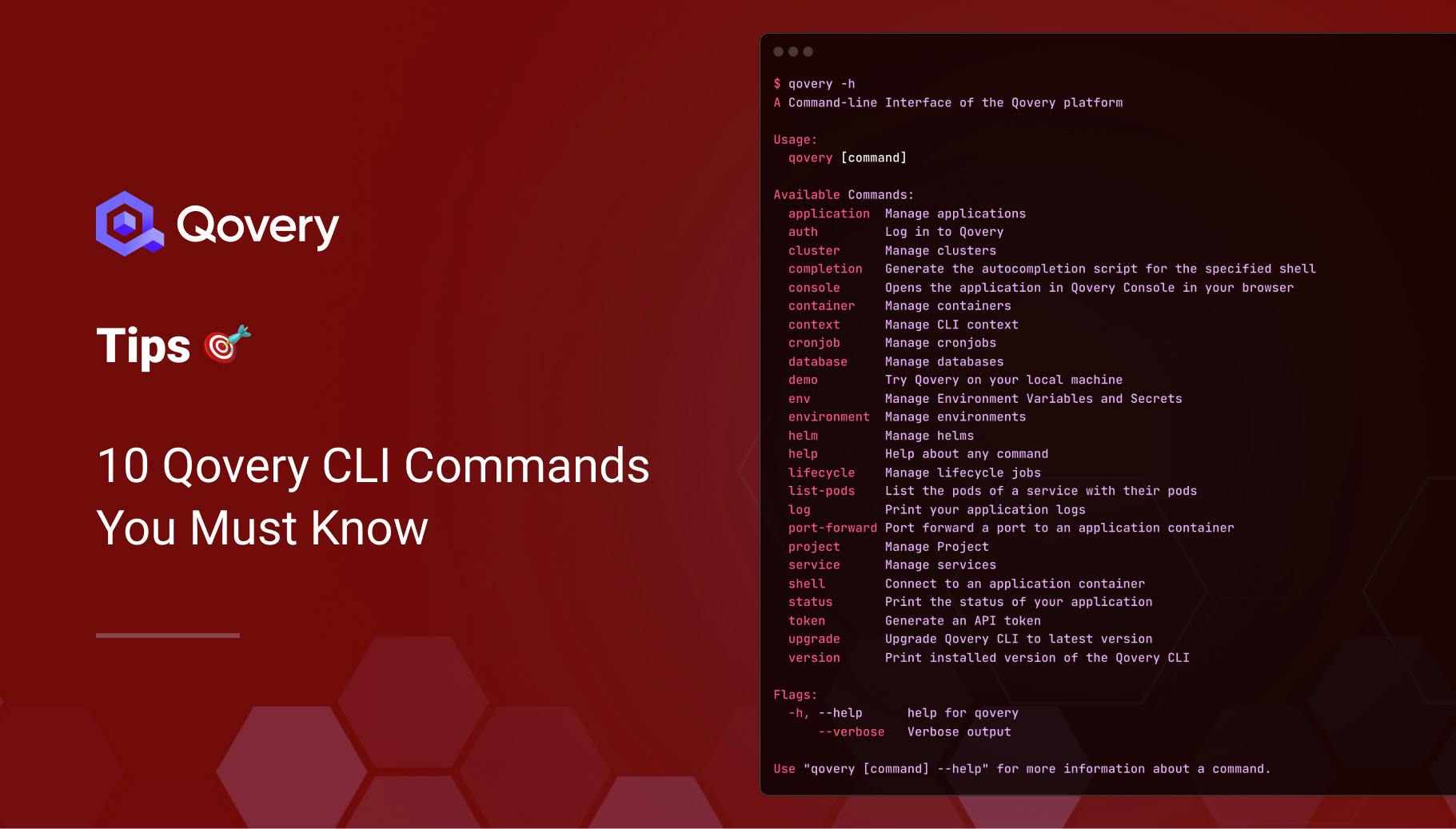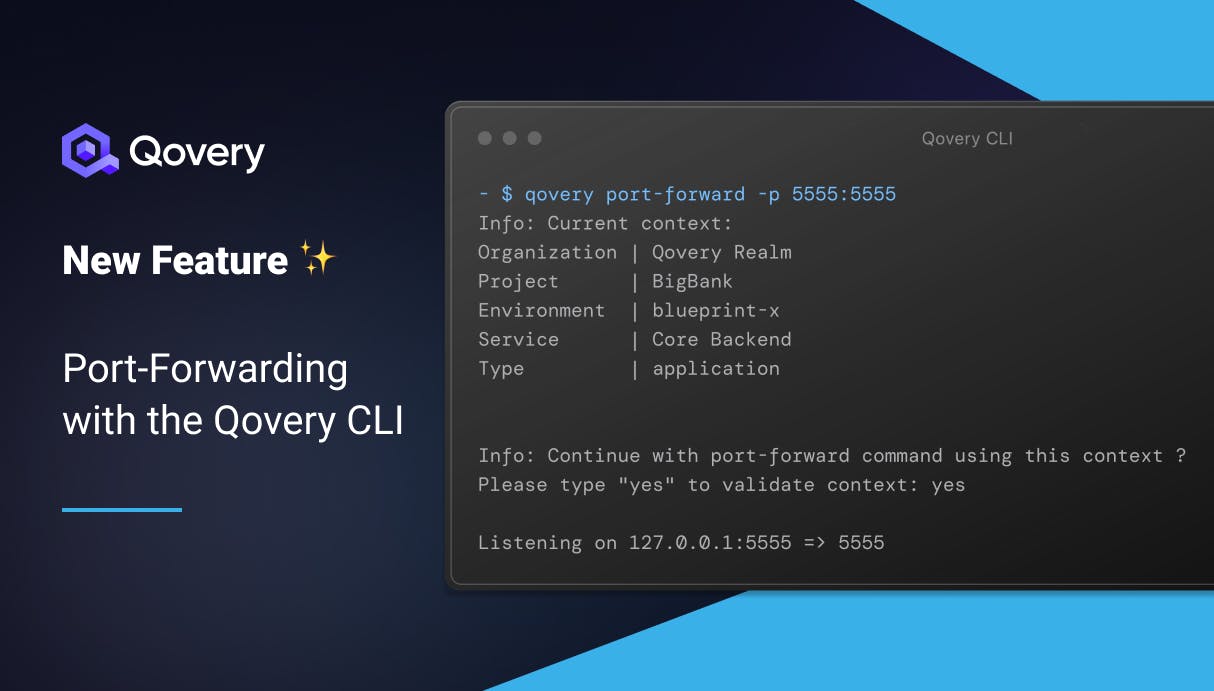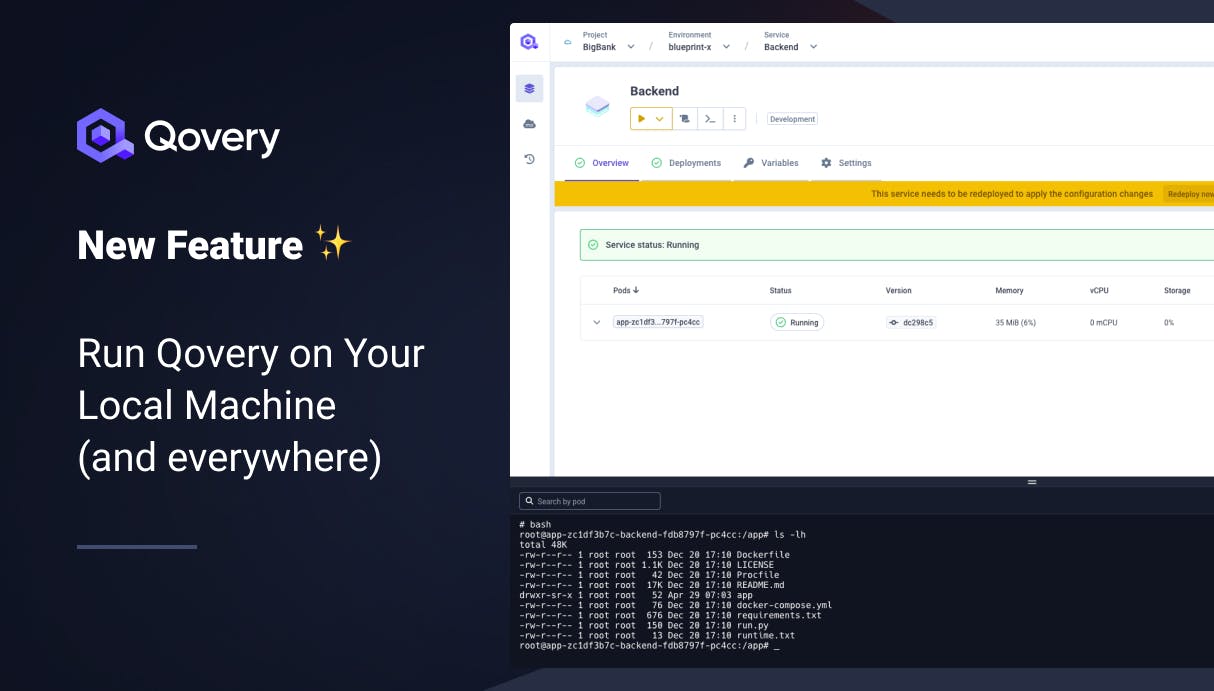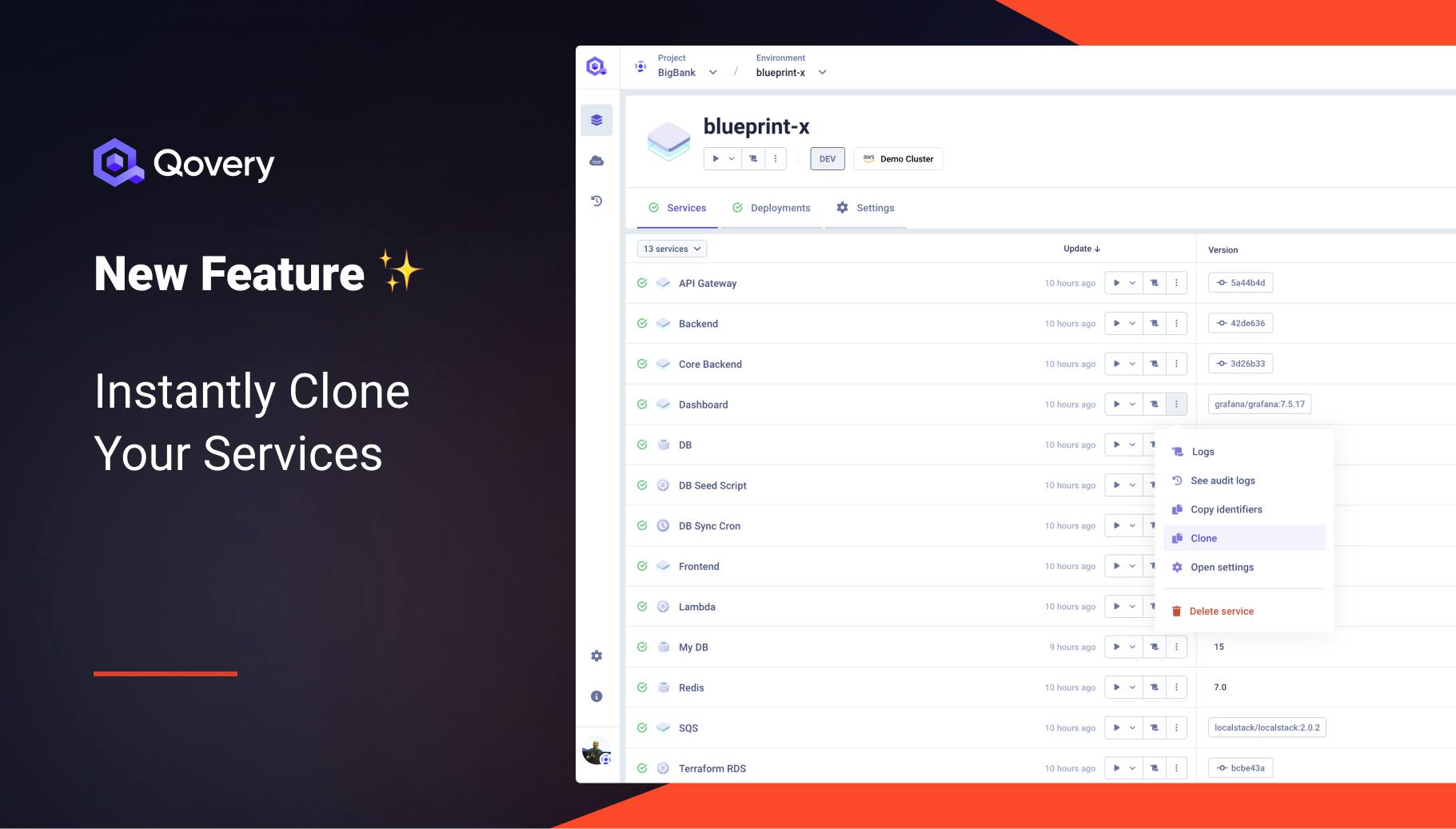The Top 10 Qovery CLI Commands You Must Know
The Qovery CLI gives developers full control of their infrastructure from the terminal. Whether you're deploying apps, managing environments, or debugging issues, these commands will save you time and clicks.

Romaric Philogène
March 22, 2025 · 3 min read
Once you have installed the Qovery CLI, here are 10 Qovery CLI commands you must know - plus a few power tips.
#1/ qovery shell
Open a shell session inside a running container
Ideal for debugging or manual inspection in live environments.
qovery shellSelect the right container if the app runs multiple services.
You can even specify the web console URL of your app to connect to it directly.
qovery shell https://console.qovery.com/organization/...#2/ qovery port-forward
Forward a remote port to your local machine
Use this to connect to internal services like Postgres, Redis, or internal APIs securely.
qovery port-forward -p 5432 Qovery handles all auth and routing under the hood.
Same as with the shell, by convenience, you can specify the web console URL to port-forward directly to a specific app.
qovery port-forward -p 5432 https://console.qovery.com/organization/...#3/ qovery cluster debug-pod
Launch an ephemeral debug pod in your cluster
This is for platform engineers. It starts a pod with essential tools like kubectl, k9s, curl, and it is excellent for troubleshooting directly inside the cluster.
qovery cluster debug-pod --cluster-id <id>Requires organization admin permissions.
#4/ qovery environment clone
Clone an entire environment in one command
It copies your apps, databases, jobs, and configurations - perfect for setting up preview, staging, or temporary test environments.
qovery environment clone --environment production --new-environment-name prod-copyEverything is copied and redeployed automatically.
#5/ qovery environment deploy
Deploy and control an entire environment
Besides deploying, this command lets you stop, restart, or delete environments.
qovery environment deploy --environment productionIt’s your environment control panel via CLI.
#6/ qovery application env
Manage environment variables and secrets for an app
Set, list, edit, or delete env vars directly from your terminal.
qovery application env listTo create an environment variable
qovery application env create --key MY_ENV_VAR --value "this is my value"Secure by design - no secrets are ever exposed in plaintext.
#7/ qovery logs
Stream your application logs in real-time
Useful for both runtime debugging and build output.
qovery logsYou can also fetch logs for jobs and databases.
#8/ qovery demo
Spin up a local k3s cluster and play with Qovery
This command sets up Qovery locally using Docker. No external infrastructure needed.
qovery demoGreat for quick testing or internal demos.
#9/ qovery auth --headless
Authenticate without using your browser
Useful in headless or remote environments (e.g. CI, SSH sessions, remote VM).
qovery auth --headlessGenerates a token-based flow for secure CLI auth.
#10/ JSON Output Support: --json
Get structured CLI output for automation and scripting
Any list or info command can be extended with --json to output machine-readable data.
qovery application env list --json -n "Terraform RDS" --organization "Qovery Realm" --project "BigBank" --environment "blueprint-x" | jq -r '.[] | select(.key == "RDS_INSTANCE_ENDPOINT").interpolated_value'Perfect for scripting workflows or integrating with other tools.
#Bonus: qovery service list --markdown
Generate a Markdown-formatted list of your running services
Ideal for CI/CD pipelines and documentation. It outputs service names and their public URLs in Markdown format.
qovery service list --markdownThis makes it easy to display or publish the list of active services after deployment (e.g., in a GitHub PR comment, Slack message, or Confluence page).
#Wrap Up
The Qovery CLI gives users full control over their applications and infrastructure from the terminal - without dealing with the complexity of Cloud and Kubernetes. Whether you're spinning up environments, debugging issues, or automating workflows, these commands help you move faster and stay in control.
Every command respects Qovery’s permission model, making it safe for teams of any size. If you haven't tried the CLI yet, install it and start integrating it into your workflows:
Want more advanced tips, scripting examples, or automation use cases? Let us know - we’ll cover them in a follow-up.
Your Favorite DevOps Automation Platform
Qovery is a DevOps Automation Platform Helping 200+ Organizations To Ship Faster and Eliminate DevOps Hiring Needs
Try it out now!

Your Favorite DevOps Automation Platform
Qovery is a DevOps Automation Platform Helping 200+ Organizations To Ship Faster and Eliminate DevOps Hiring Needs
Try it out now!


